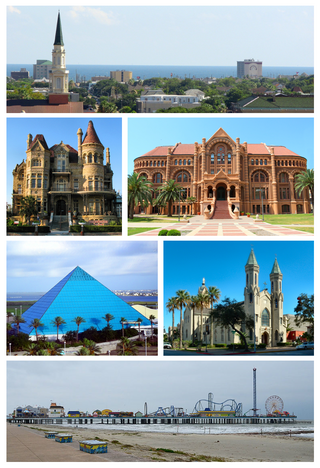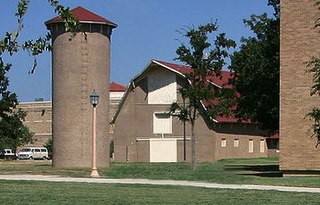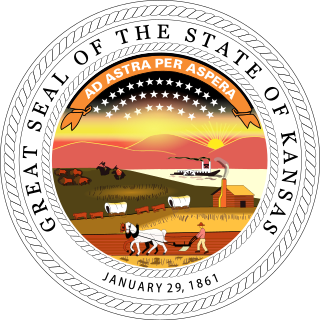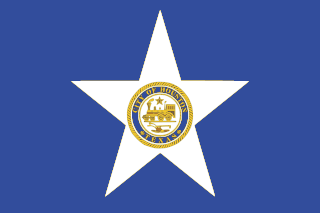Related Research Articles

Galveston is a coastal resort city and port off the Southeast Texas coast on Galveston Island and Pelican Island in the U.S. state of Texas. The community of 211.31 square miles (547.3 km2), with a population of 53,695 at the 2020 census, is the county seat of surrounding Galveston County and second-largest municipality in the county. It is also within the Houston–The Woodlands–Sugar Land metropolitan area at its southern end on the northwestern coast of the Gulf of Mexico.

Rodeo is a competitive equestrian sport that arose out of the working practices of cattle herding in Spain and Mexico, expanding throughout the Americas and to other nations. It was originally based on the skills required of the working vaqueros and later, cowboys, in what today is the western United States, western Canada, and northern Mexico. Today, it is a sporting event that involves horses and other livestock, designed to test the skill and speed of the cowboys and cowgirls. American-style professional rodeos generally comprise the following events: tie-down roping, team roping, steer wrestling, Steer roping, saddle bronc riding, bareback bronc riding, bull riding and barrel racing. The events are divided into two basic categories: the rough stock events and the timed events. Depending on sanctioning organization and region, other events such as breakaway roping, goat tying, and pole bending may also be a part of some rodeos. The "world's first public cowboy contest" was held on July 4, 1883, in Pecos, Texas, between cattle driver Trav Windham and roper Morg Livingston.

Harris County is a county located in the U.S. state of Texas; as of the 2020 census, the population was 4,731,145, making it the most populous county in Texas and the third-most populous county in the United States. Its county seat is Houston, the most populous city in Texas and fourth-most populous city in the United States. The county was founded in 1836 and organized in 1837. It is named for John Richardson Harris, who founded the town of Harrisburg on Buffalo Bayou in 1826. According to the July 2022 census estimate, Harris County's population has shifted to 4,780,913 comprising over 16% of Texas's population. Harris County is included in the nine-county Houston–The Woodlands–Sugar Land metropolitan statistical area, which is the fifth-most populous metropolitan area in the United States.

Garza County is a county located in the U.S. state of Texas. As of the 2020 census, its population was 5,816, of which most of the population were residing in its county seat, and only incorporated municipality, Post. The county was created in 1876 and later organized in 1907. Garza is named for a pioneer Bexar County family, as it was once a part of that county.

Coryell County is a county located on the Edwards Plateau in the U.S. state of Texas. As of the 2020 census, its population was 83,093. The county seat is Gatesville. The county is named for James Coryell, a frontiersman and Texas Ranger who was killed by Caddo Indians.

The Southern United States, sometimes Dixie, also referred to as the Southern States, the American South, the Southland, Dixieland, or simply the South, is a geographic and cultural region of the United States of America. It is between the Atlantic Ocean and the Western United States, with the Midwestern and Northeastern United States to its north and the Gulf of Mexico and Mexico to its south.

The University of Texas at San Antonio (UTSA) is a public research university in San Antonio, Texas. With over 34,000 students across its four campuses spanning more than 758 acres, UTSA is the largest university in San Antonio and the eighth-largest by enrollment in the state of Texas. It is classified among "R1: Doctoral Universities – Very High Research Activity" and offers over 170 degree options from its nine colleges.

Texas Lutheran University (TLU) is a private Evangelical Lutheran university in Seguin, Texas.

Agricultural education is the systematic and organized teaching, instruction and training available to students, farmers or individuals interested in the science, business and technology of agriculture as well as the management of land, environment and natural resources.

Boulevard Oaks is a neighborhood in Houston, Texas, United States, containing 21 subdivisions north of Rice University and south of U.S. Highway 59. Developed primarily during the 1920s and 1930s, Boulevard Oaks contains two National Register historic districts, Broadacres and Boulevard Oaks. The Boulevard Oaks Civic Association (BOCA) is the common civic association for all 21 subdivisions.

Rosenberg Library, a public library located at 2310 Sealy Street in Galveston, Texas, United States, is the oldest continuously operating library in Texas. It serves as headquarters of the Galveston County Library System, and its librarian is also the Galveston County Librarian.

Radha Madhav Dham, originally called Barsana Dham is the main U.S. center of Jagadguru Kripalu Parishat, a nonprofit organization located on more than 200 acres of land in Hays County, south of Austin, Texas. It is a Hindu temple and ashram campus, the oldest Hindu Temple in Texas the largest in North America.
The Journal of South Texas is a biannual peer-reviewed academic journal published for the South Texas Historical Association by Texas A&M University-Kingsville. The editor-in-chief is Alberto Rodriguez. It was established in 1974 and covers the history and heritage of greater Texas.

Mexicans in Omaha are people living in Omaha, Nebraska, United States who have citizenship or ancestral connections to the country Mexico. They have contributed to the economic, social and cultural well-being of Omaha for more than a century. Mexicans, or Latino people identified incorrectly as being from Mexico, have been accounted for in the history of Omaha, Nebraska since 1900. The entire Latino population of Omaha increased ninety percent between 1990 and 1997.

Shenandoah is a subdivision in Houston, Texas, United States.

The Kansas Historical Society is the official state historical society of Kansas.

The African American population in Houston, Texas, has been a significant part of the city's community since its establishment. The Greater Houston area has the largest population of African Americans in Texas and west of the Mississippi River. Black Enterprise has referred to Houston as a Black mecca.
Jeane Porter Hester was an American physician known for her work in cancer research and therapy. She was a Professor of Medicine, Chief of Supportive Therapy, and Chief of Leukapheresis at University of Texas MD Anderson Cancer Center in Houston, Texas, and was one of the developers of IBM 2997, the computerized blood cell separator. She was inducted into the Texas Women's Hall of Fame in 1984 and the Oklahoma Hall of Fame in 1987.
References
- ↑ South Texas Historical Association Archived 2007-07-10 at the Wayback Machine
- ↑ Journal of South Texas Archived 2006-10-04 at the Wayback Machine